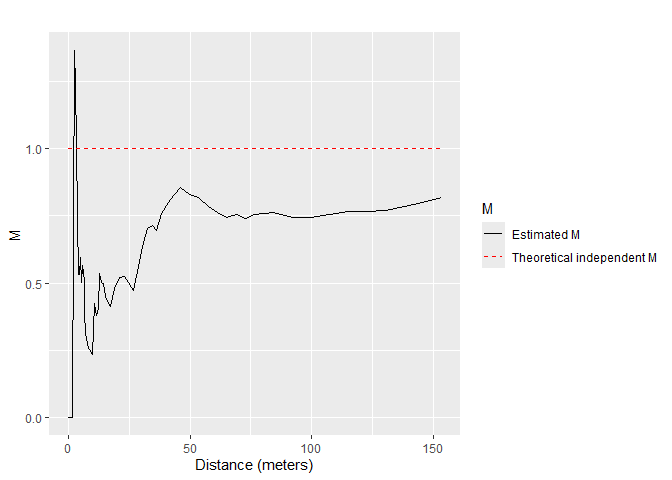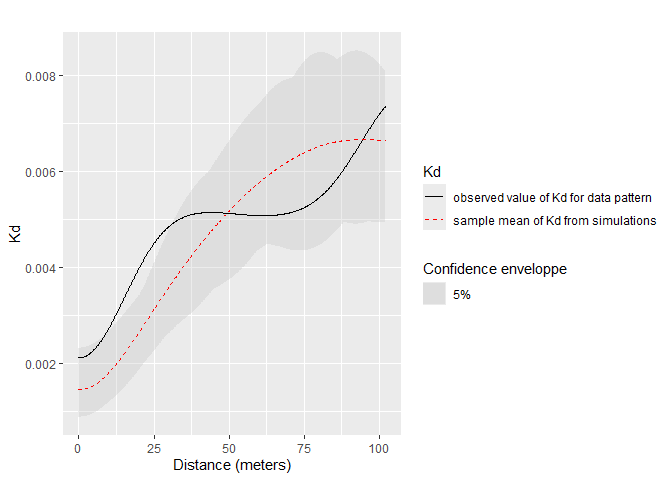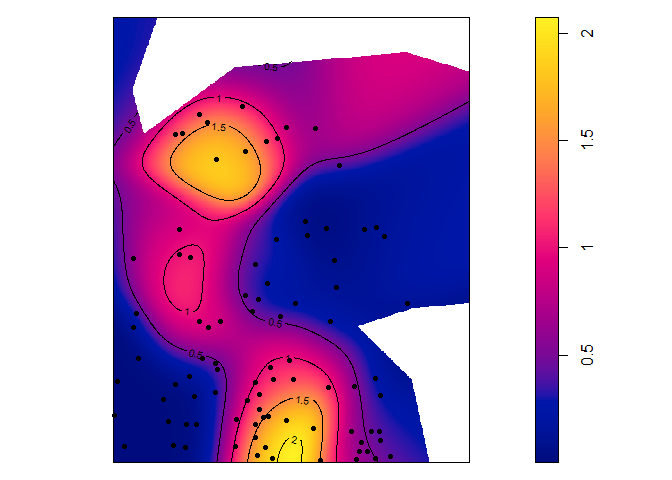
The hardware and bandwidth for this mirror is donated by dogado GmbH, the Webhosting and Full Service-Cloud Provider. Check out our Wordpress Tutorial.
If you wish to report a bug, or if you are interested in having us mirror your free-software or open-source project, please feel free to contact us at mirror[@]dogado.de.

dbmss is an R package for simple computation of spatial statistic functions of distance to characterize the spatial structures of mapped objects, including classical ones (Ripley’s K and others) and more recent ones used by spatial economists (Duranton and Overman’s Kd, Marcon and Puech’s M). It relies on spatstat for some core calculation.
You can install the current release of the package from CRAN or the development version of dbmss from GitHub with:
# install.packages("pak")
pak::pak("EricMarcon/dbmss")The main functions of the package are designed to calculate distance-based measures of spatial structure. Those are non-parametric statistics able to summarize and test the spatial distribution (concentration, dispersion) of points.
The classical, topographic functions such as Ripley’s K are provided by the spatstat package and supported by dbmss for convenience.
Relative functions are available in dbmss only. These are the \(M\) and \(m\) and \(K_d\) functions.
The bivariate \(M\) function can be calculated for Q. Rosea trees around V. Americana trees:
library(dbmss)
autoplot(
Mhat(
paracou16,
ReferenceType = "V. Americana",
NeighborType = "Q. Rosea"
),
main = ""
)
Confidence envelopes of various null hypotheses can be calculated. The univariate distribution of Q. Rosea is tested against the null hypothesis of random location.
autoplot(
KdEnvelope(paracou16, ReferenceType = "Q. Rosea", Global = TRUE),
main = ""
)
Significant concentration is detected between about 10 and 20 meters.
Individual values of some distance-based measures can be computed and mapped.
# Calculate individual intertype M(distance) value
ReferenceType <- "V. Americana"
NeighborType <- "Q. Rosea"
fvind <- Mhat(
paracou16,
r = c(0, 30),
ReferenceType = ReferenceType,
NeighborType = NeighborType,
Individual = TRUE
)
# Plot the point pattern with values of M(30 meters)
p16_map <- Smooth(
paracou16,
fvind = fvind,
distance = 30,
# Resolution
Nbx = 512,
Nby = 512
)
par(mar = rep(0, 4))
plot(p16_map, main = "")
# Add the reference points to the plot
is.ReferenceType <- marks(paracou16)$PointType == ReferenceType
points(
x = paracou16$x[is.ReferenceType],
y = paracou16$y[is.ReferenceType],
pch = 20
)
# Add contour lines
contour(p16_map, nlevels = 5, add = TRUE)
A quick introduction is in
vignette("dbmss").
A full documentation is available on the package website. It is a continuous update of the paper published in the Journal of Statistical Software (Marcon et al., 2015).
Marcon, E., Traissac, S., Puech, F. and Lang, G. (2015). Tools to Characterize Point Patterns: dbmss for R. Journal of Statistical Software. 67(3): 1-15.
These binaries (installable software) and packages are in development.
They may not be fully stable and should be used with caution. We make no claims about them.
Health stats visible at Monitor.